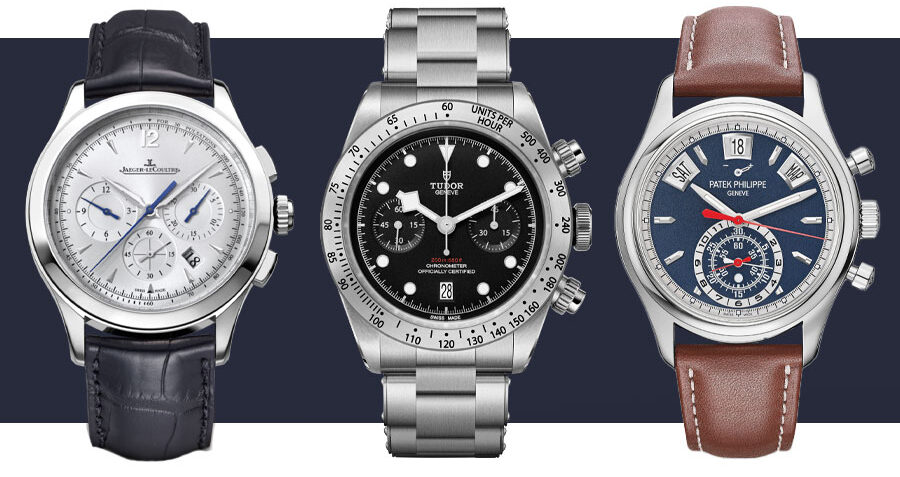Tactile Timing: The Origins of the Chronograph

It all begins with a single action. Press the pusher and feel the mechanical engagement that releases the second hand as it begins to circumnavigate the dial. Watch as the hand approaches 60 and the minute counter jumps to another hash. Depress the pusher once more and everything freezes as if time stands still. Hit the reset pusher and all hands snap back to zero in the blink of an eye—the delightful dance is ready to begin again. Its tactical nature makes the chronograph function unique among wristwatches, as no other complication requires as much interaction.
ORIGINS OF THE TIME WRITER
The first patented chronograph was developed in 1821 at the request of King Louis XVIII—and it was not on a wristwatch. The King was an avid horse racing enthusiast and wanted to record and compare the fastest race times. His personal watchmaker, Nicolas Mathieu Rieussec, developed a new machine consisting of a clockwork mechanism in a box with two enamel discs, one scaled to minutes and the other to seconds. The mechanism would be activated when the race began and when the horse crossed the finish line, a button was depressed that would drop an ink-filled nib onto the disc to mark the exact time. Rieussec’s machine was dubbed “chronograph,” which literally means “time writer.” It wasn’t long before the usefulness of this invention was understood as watchmakers and inventors rushed to refine the nascent technology. It needed to be more portable, accurate and require less ink!
Although the basic idea for a chronograph was invented in the early 19th century, it took nearly 100 years for the technology to be refined and reliable enough to be used in a wristwatch. Chronographs are very difficult to engineer—only the most technologically advanced manufactures produce their own models. In fact, a self-winding chronograph was not introduced until the late 1960’s. Even with the advancements in modern timekeeping, chronographs remain not only a useful tool, but a true expression of horological achievement.
A SOPHISTICATED STOPWATCH
The ability to record and measure elapsed time from a wrist is extremely valuable in a wide range of industries, making the chronograph an indispensable tool. The introduction of aviation and automobile racing were the next major drivers of chronograph technology, causing the popularity and demand to raise considerably. Any industry requiring very precise or repeated timing could benefit from such a mechanism—sporting events, military navigation, medicine, and even the space program. Aside from timing rocket burn intervals, chronographs also offer more practical uses like tracking parking meters, exercise, meetings, or steaks on the grill. With your chronograph, you can find out how long it REALLY takes your spouse when they say they’ll be ready in five minutes!
A staple within any watch collection, chronographs are one of the most useful complications as they suit a variety of needs. Chronographs will always be the tools of pilots, astronauts, race car drivers and doctors, but are also universally appreciated for their ease of use for the everyday collector.
 Chronograph Functions
Chronograph Functions
While all chronographs are designed to measure and record elapsed time, certain models also add additional features to enhance the chronograph’s functionality.
The Jaeger-LeCoultre Master Chronograph utilizes a pulsations scale, which allows the user to quickly and easily calculate the amount of pulses per minute. Start the chronograph, count out 30 pulses, and stop the chronograph. The center hand will indicate the total amount of pulses per minute—a very handy feature for the medical professional!
A tachymeter scale, like the one found on the TUDOR Black Bay Chronograph, can be used to measure units per hour. Greatly useful for calculating speed over distance, this scale is a popular choice for a watch that is designed to handle the particular rigors of a racetrack.
The Patek Philippe Ref. 5960G adds an extra function, called a Flyback chronograph. This extra complication allows the user to instantly restart the chronograph with a single button push as opposed to having to stop, reset, and restart the chronograph. This is especially valuable for timing laps or for pilots that need to make precise course corrections at set intervals.



